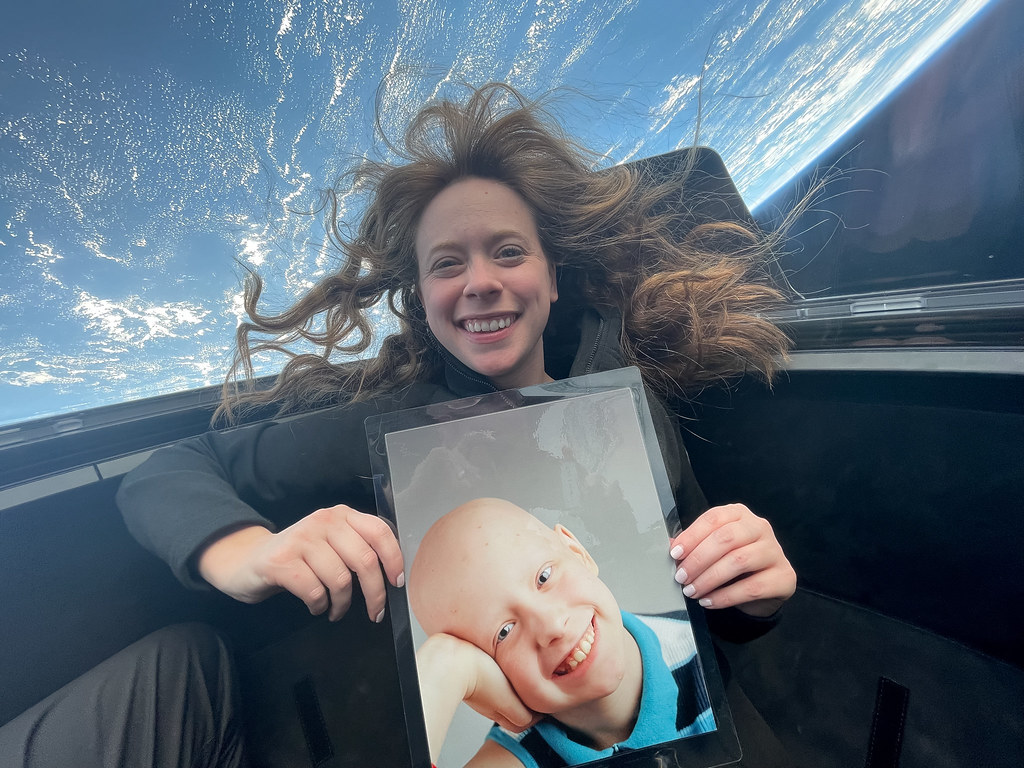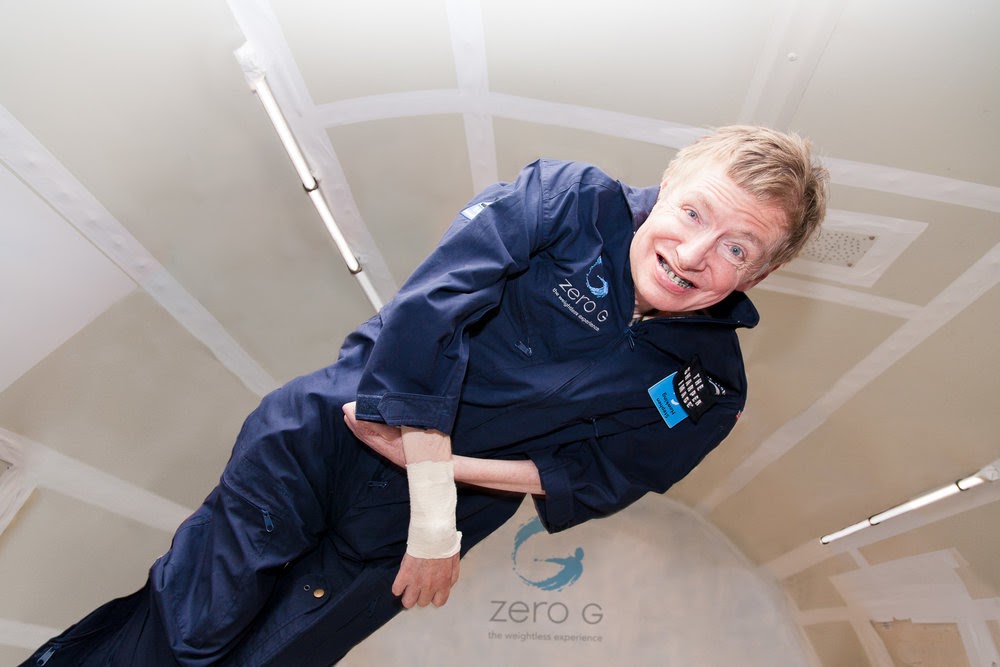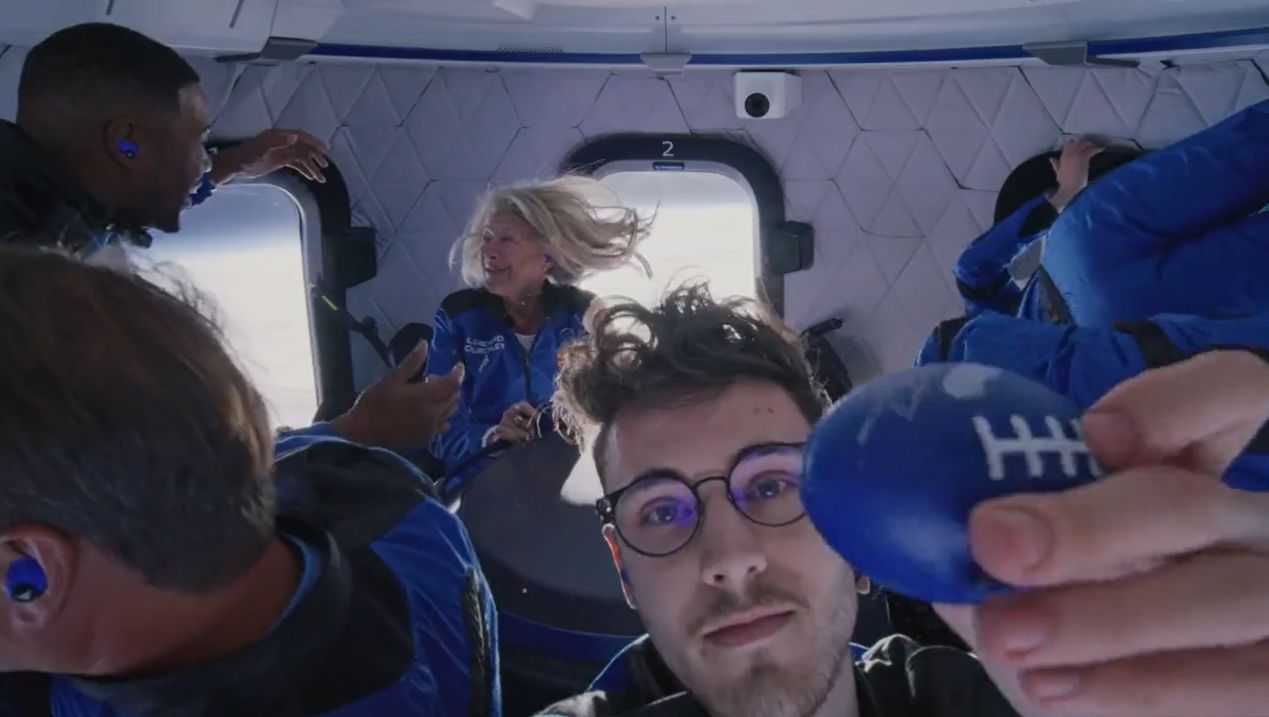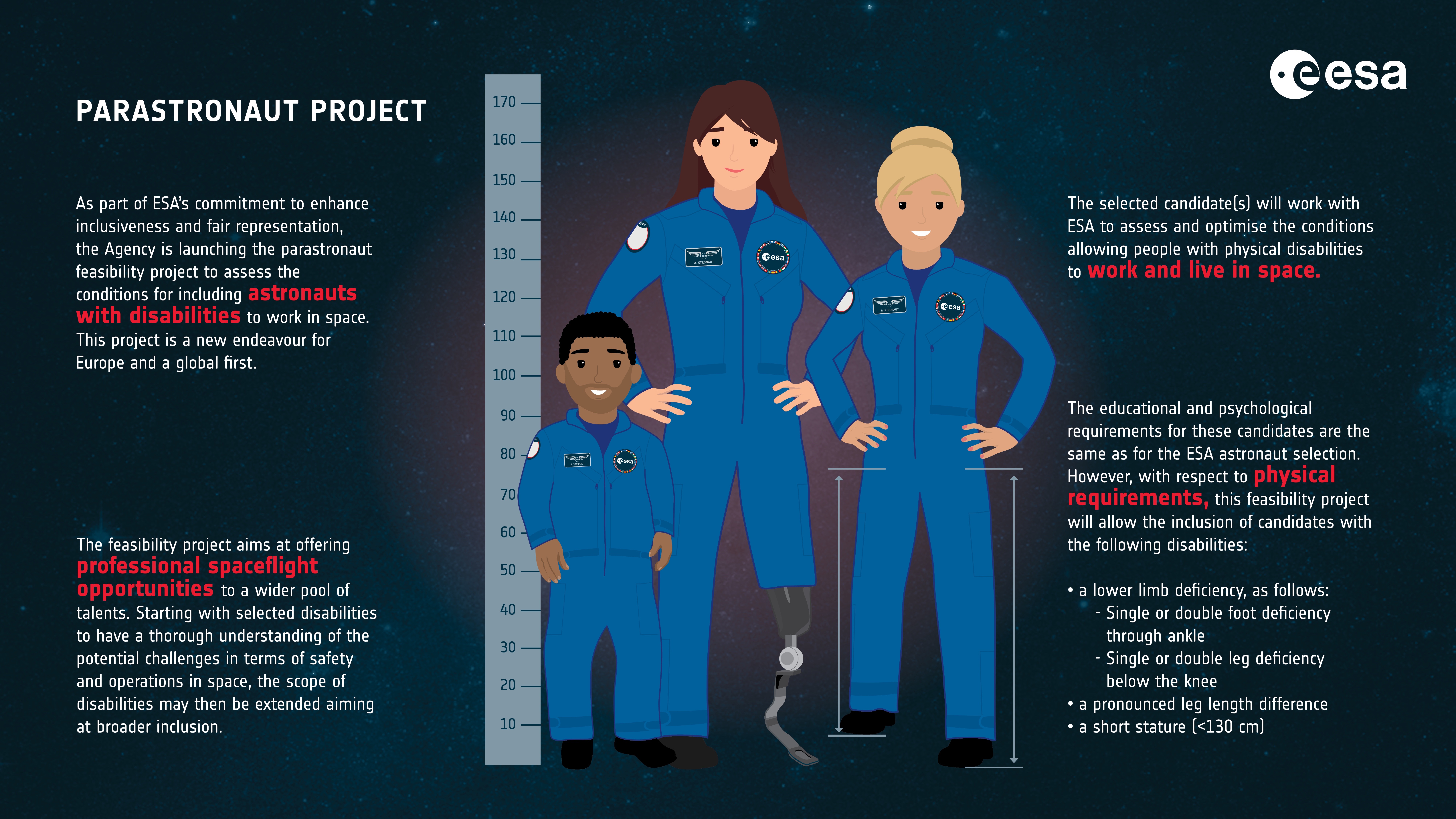Equal access to space: New study investigates how to get more 'parastronauts' aloft
The report may lay the groundwork for more inclusive human spaceflight in the future.

A new study sponsored by NASA investigates the feasibility of sending people with disabilities safely into space and returning them back to Earth.
The appraisal, called the Parastronaut Feasibility Foundational Research Study, makes a number of recommendations, including revising medical standards for astronaut selection and using parabolic aircraft flights to demonstrate parastronaut proof of principle.
The new study, which you can find here, defines "parastronauts" as individuals with certain physical disabilities, such as lower leg deficiencies, short stature and differences in leg length. The report's intent is to make progress toward increased inclusion for human spaceflight.
Issued in November by the Potomac Institute for Policy Studies of Arlington, Virginia, the months-long study was done for NASA's Office of the Chief Health Medical Officer and involved consultation with medical experts, military and industry leaders and other organizations, as well as subject matter experts including former astronauts.
What it's like to become a NASA astronaut: 10 surprising facts

Right stuff and tough
Go back in time more than 60 years and recall the "right stuff and tough" prerequisites for America's first astronaut corps, the Mercury 7. Still in place at NASA are many of the same stringent rules that can disqualify individuals with known physical disabilities from spaceflight, keeping them ground-bound.
"There are ways to safely send parastronauts into space. It is vital NASA and space agencies around the world look to include a wider range of spaceflight candidates, and not exclude any potential exemplar astronaut candidates based on physical limitations that do not align with current technological and medical advances," said Potomac Institute CEO Jennifer Buss.
Breaking space news, the latest updates on rocket launches, skywatching events and more!
"Our findings and recommendations stem from months of data collected from interviews, research and other methodologies," she added, referring to the new report.

Helping the private sector
Former NASA chief and astronaut Charles Bolden is a senior fellow at the Potomac Institute and serves on its board of regents. On one hand, he told Space.com, "there's no burning need" for NASA to go out and expand the selection criteria for its astronauts.
But, he added, "NASA should be open to doing as much research as possible to help the private sector understand how best to fully integrate less than fully physically capable people into a crew."
"I do believe that there are very few physical limitations to being able to successfully fly in space," Bolden told Space.com. A parastronaut "can be an incredible crew member contributor. I've always felt that."
A key issue, Bolden said, is how to get a parastronaut into space safely "and in the event that something bad happens, how [to] get them out of that situation safely without putting the rest of the crew in jeopardy."
Autonomous space travel
Bolden cited SpaceX's Inspiration4 mission, the first-ever human spaceflight to orbit Earth with only private citizens on board. Inspiration4 had four crewmembers, who circled our planet for three days this past September on a SpaceX Crew Dragon capsule.
One of those civilian space travelers was Hayley Arceneaux, a physician assistant at St. Jude Children's Research Hospital and a pediatric cancer survivor. As part of her treatment at the hospital years ago, she underwent chemotherapy and had surgery to replace some of her leg bones with prosthetics.
Bolden underscored Crew Dragon's highly autonomous design, which reduces the need for human input and, for the most part, has space adventurers just go along for the ride.
"There's a difference between NASA, a government organization, and the private sector where their primary motivation is profit," Bolden said. NASA transfer of knowhow to perform safe human spaceflight, he said, can assist private space transportation to become competitive on the open market.
Inspiration4: SpaceX's historic private spaceflight in photos

Initial step
"I do see the parastronaut study as an initial step towards a larger endeavor, an initial starting point," said Alyssa Adcock, a Potomac Institute research fellow who spearheaded the new report.
Adcock views the study "as the first step towards inclusivity and a much larger way that we view human spaceflight and access to human spaceflight," she told Space.com.
From Adcock's perspective, NASA has a real opportunity to establish parastronaut standards, with other human spaceflight-capable countries then potentially looking to NASA and adopting those standards.
Positive signs
Several data points suggest that parastronauts may become a bigger part of the spaceflight picture going forward.
There's Arceneaux's participation in Inspiration4, for example. And the European Space Agency (ESA) launched its own parastronaut project in early 2021.
The ESA effort was geared toward individuals who are psychologically, cognitively, technically and professionally qualified to be an astronaut but have a physical disability that would normally prevent them from being selected due to the requirements imposed by the use of current space hardware. The project centered on inclusion of those with a physical disability while still ensuring that a mission is safe and productive.
Similar work is underway by the U.S. group AstroAccess, which focuses on launching disabled scientists, veterans, students, athletes and artists on parabolic airplane flights operated by the Zero Gravity Corporation. AstroAccess too sees such engagement as the first step in a progression toward flying a diverse range of people to space.
Selected AstroAccess Ambassadors are responsible for sharing their experience with the public. They become advocates for disability inclusion and equity in space exploration.
Risks and mitigation strategies
Like Bolden, Adcock points to the rise of commercial spaceflight.
"We are seeing a shift in the way we think about space, not solely NASA or ESA launching research endeavors," Adcock said. "We have to stop thinking about the risks exclusively for 'perfect individuals,' the most husky and robust person."
Rather, Adcock said, it's time to start thinking about how to apply the research and knowledge about spaceflight risks and mitigation strategies to the broader public.
Adcock senses that there's a growing international conversation about rallying support for greater inclusivity in spaceflight.
"There's creation of a more inclusive environment for spaceflight, regardless of their gender, their race, their sexuality, their disability," Adcock said, "and these are impactful goals for that next generation of astronauts."
Leonard David is author of the book "Moon Rush: The New Space Race," published by National Geographic in May 2019. A longtime writer for Space.com, David has been reporting on the space industry for more than five decades. Follow us on Twitter @Spacedotcom or on Facebook.

Leonard David is an award-winning space journalist who has been reporting on space activities for more than 50 years. Currently writing as Space.com's Space Insider Columnist among his other projects, Leonard has authored numerous books on space exploration, Mars missions and more, with his latest being "Moon Rush: The New Space Race" published in 2019 by National Geographic. He also wrote "Mars: Our Future on the Red Planet" released in 2016 by National Geographic. Leonard has served as a correspondent for SpaceNews, Scientific American and Aerospace America for the AIAA. He has received many awards, including the first Ordway Award for Sustained Excellence in Spaceflight History in 2015 at the AAS Wernher von Braun Memorial Symposium. You can find out Leonard's latest project at his website and on Twitter.
